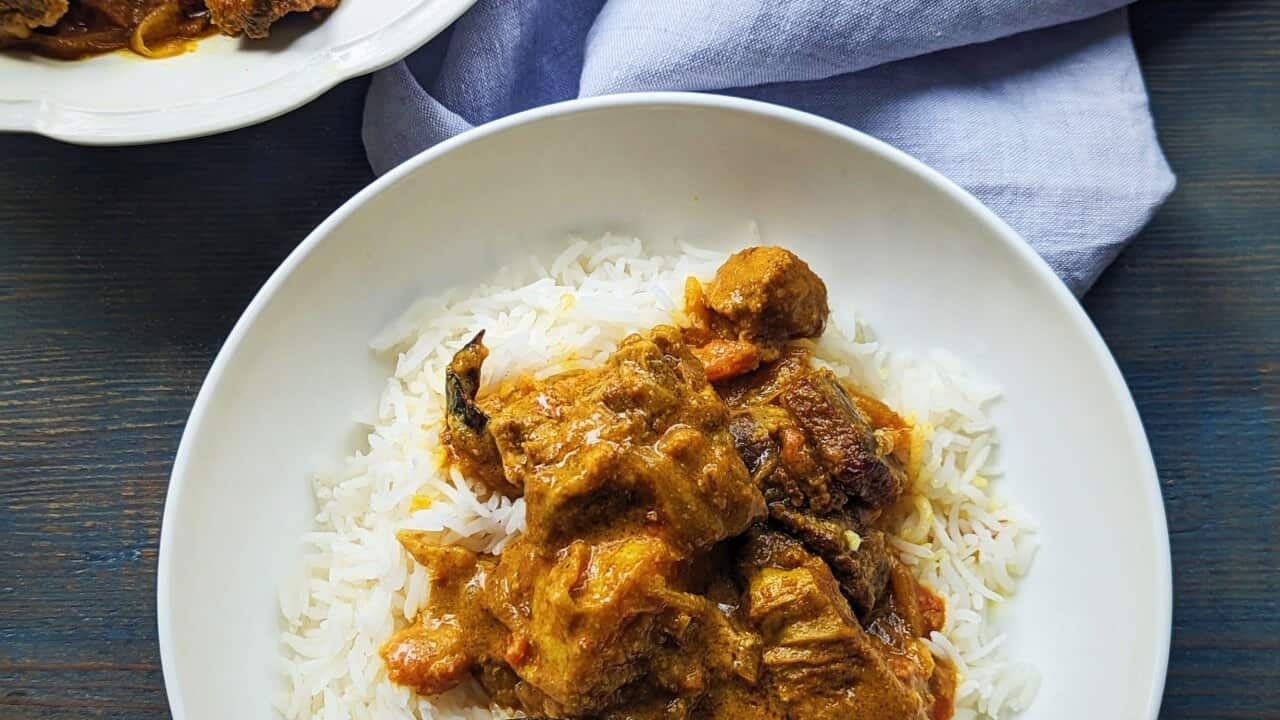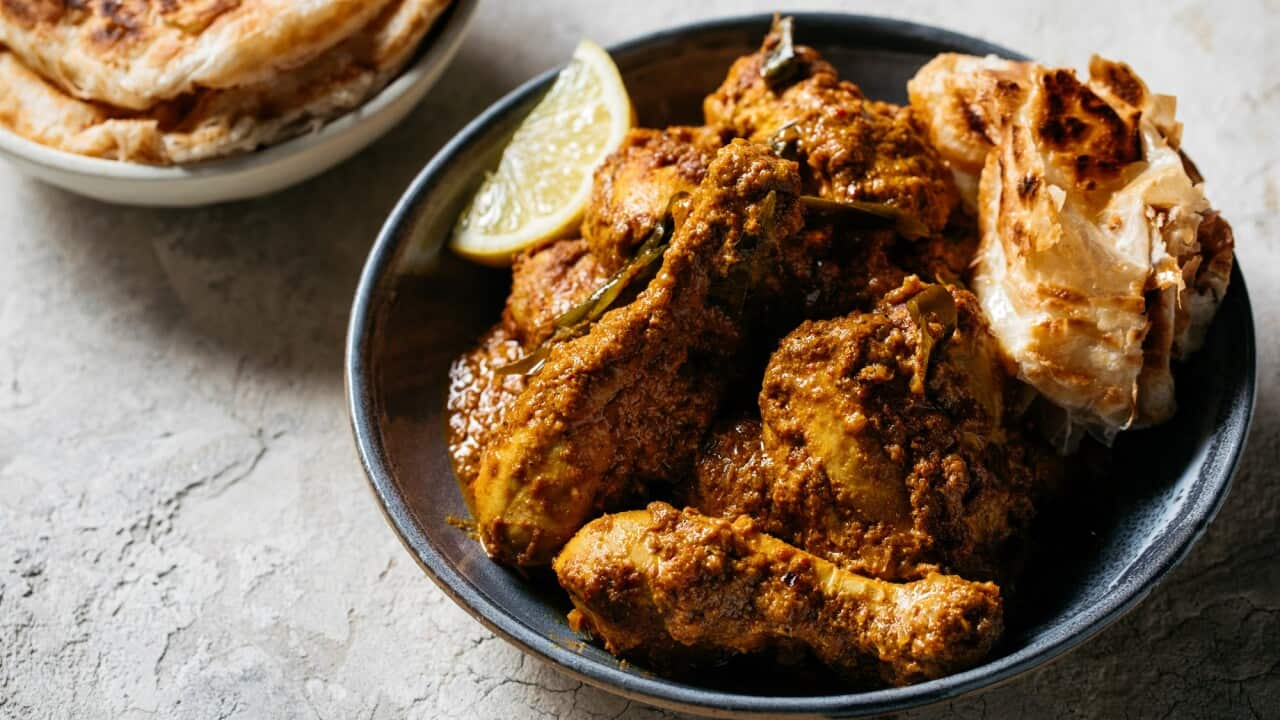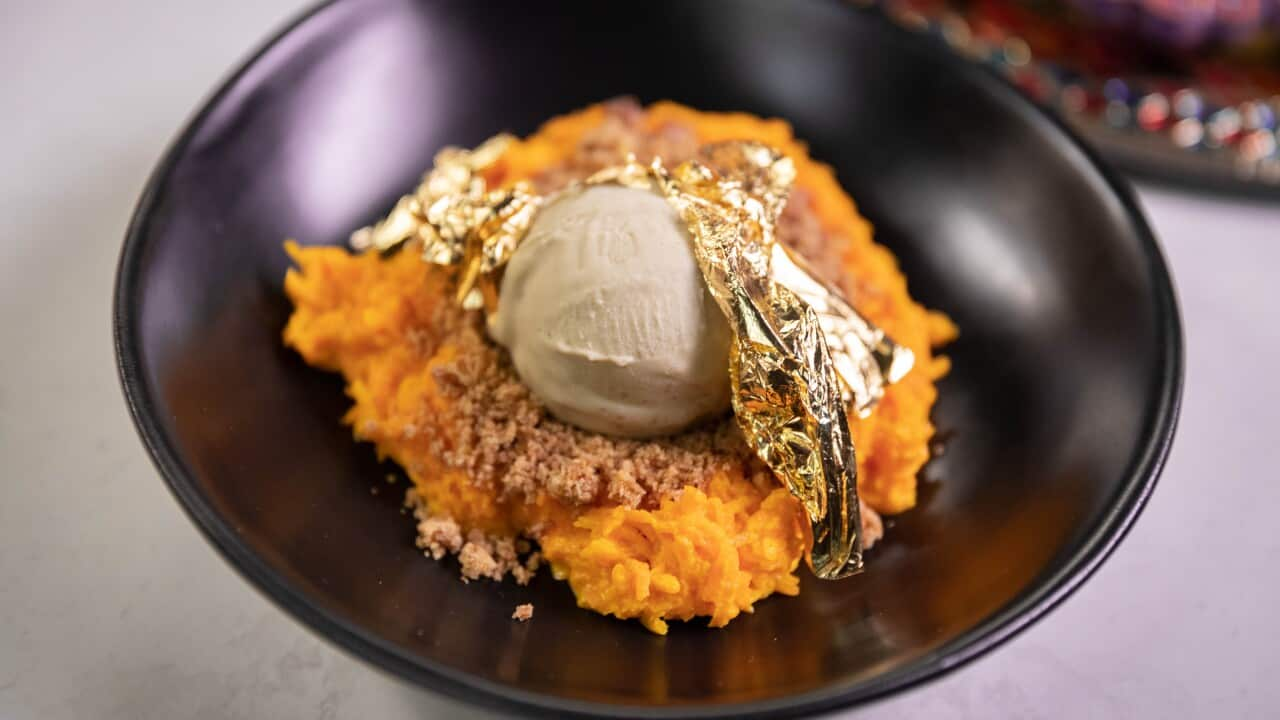Celebrate Diwali with SBS - Visit to explore a distinctive range of content across the SBS network, including podcasts, articles and more from SBS Audio’s Bangla, Gujarati, Hindi, Malayalam, Nepali, Punjabi, Tamil and Telugu programs. Stream all Diwali content now and free at . #Diwali #Deepavali #FestivalsOfLights
We barely experienced winters in Mumbai. The only time you knew that it was winter was when there was a light nip in the air in the evenings and mornings, giving us brief respite from the usual humidity. During this time, we had to wear a red sweater to school for a few weeks.
Winters were special because every year without fail my late grandfather made gajar ka halwa, or carrot halwa, for our family.
In India, winter desserts are designed to warm the body, and since carrots are a source of vitamin A, fibre and antioxidants, and milk and ghee have fat and protein, carrot halwa is a firm favourite.

Grandpa's carrot halwa. Source: Bhavna Kalra
When fresh carrots flooded the local market, my mother bought them in bulk and my brother and I helped to peel and grate them. Our hands began to ache after peeling just a few but the thought of eating a bowl of hot halwa kept us going. My grandfather placed a big wok on the stove on our verandah, filled it with carrots then sat on a stool until the moisture evaporated from them.
CARROTS GALORE

My mum's winter carrot pickle recipe
He added full-fat milk and cooked it till the mixture softened and the milk thickened. Then he added sugar to sweeten the mixture and a generous portion of homemade ghee (clarified butter) to up the flavour and make it richer. He would garnish with nuts, such as almonds, cashews and pistachios, to add texture and crunch.
My grandfather passed away many years ago. While my brother and I certainly miss waking up to the scent of halwa, I often remind myself of him by making his halwa recipe and now I use purple carrots, which are known for their rich caramel aftertaste.
Every time I make it, I am transported to my grandfather's arms where his eyes would light up hearing our squeals of delight after tasting his halwa. It gives comfort to cold and tired bodies, making the prospect of waking up the next day to start the daily routine almost bearable.
Gajar ka halwa (carrot fudge)
Serves 4-6
Ingredients
- 1 kilo purple carrots
- 4 cups full-fat milk
- 4 tbsp ghee (clarified butter)
- 10-12 tbsp sugar or raw sugar
- 1 tsp cardamom powder
- ½ cup chopped slivered almonds or pistachios to garnish
Method:
- Wash the carrots thoroughly then peel them. After this, grate them using a food processor.
- In a large, deep thick-bottomed pan, add the carrots and cook them over a low flame, stirring occasionally so they don't stick to the bottom of the pan or burn. This can take 15-20 minutes, depending on the carrots.
- Once all the moisture from the carrots has evaporated, stir in the milk and cook over a low flame for 30-45 minutes or until the mixture has a thick texture and the milk has evaporated, stirring occasionally.
- Stir in the ghee and cook for 10 minutes, until the ghee begins to release from the sides of the pan.
- Stir the sugar in and cook for another 10 minutes (until the sugar has dissolved). After 4 minutes has passed, stir again to make sure the mixture doesn't burn.
- Garnish this mixture with cardamom powder and nuts. Serve warm or cold.
Notes:
- The halwa can be refrigerated and will keep for 2 weeks.
- You can use pink or orange carrots if you prefer.
- Sugar can be added for taste. If the carrots are sweet, you can reduce the quantity of sugar.
- Some people like to add khoya (milk solids) to enhance the creaminess of the halwa. You can find it in the cold section of Indian shops in Australia. If using it, add it after the milk has reduced.
- You can substitute the carrots with roasted beetroots to make a beetroot halwa, which is equally delicious.
MORE INDIAN FOOD

Get on board with railway mutton curry











